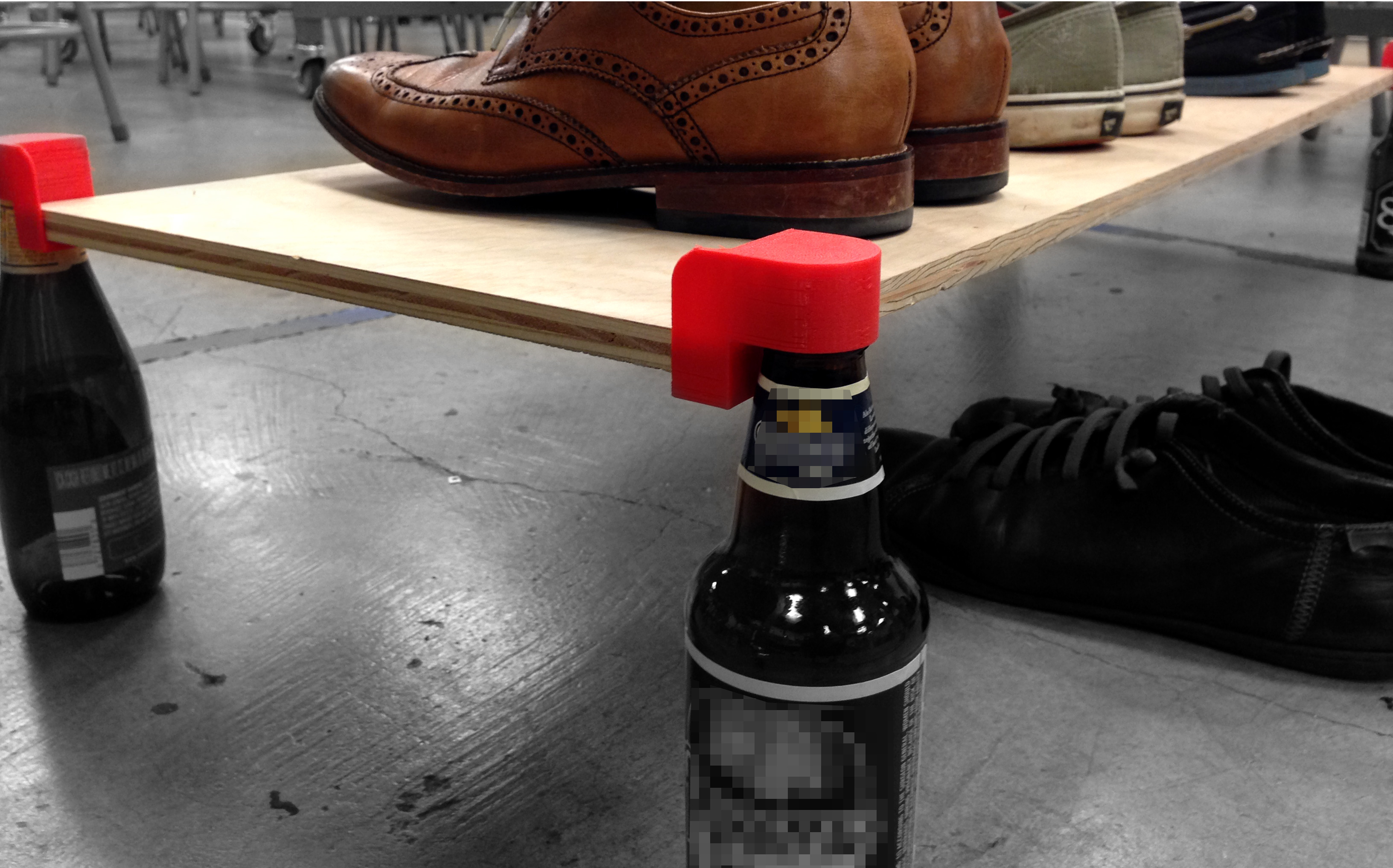UC Berkeley – 3D Printing Designathon
Awarded Judges' Vote 1st Place - UC Berkeley Designathon
Awarded Bronze Medal - Instructables
The Problem:
"Improve the life of a UC Berkeley student." This was the prompt given to our team at UC Berkeley's inaugural 3D Printing Designathon. The entire process was to be ideated and prototyped within a 24 hour period, at the end of which we would present to judges from industry.We identified a common frustration and source of anxiety for students who live on campus and live with a tight budget: an inability to afford furniture to customize and exert control over one's living space due to a lack of financial independence.
The Solution:
A 3D-printed joint that empowers students to save money and save the environment by using repurposed found materials to build their own furniture (bookshelves, shoe rack, etc). The joint was designed to mount securely atop most glass beverage bottles.
The Process:
For UC Berkeley's 3D printing Designathon, I co-developed "Berni" (combination of the words "Beer Bottle" and "Furniture". I co-led a team (Daniel Lim, Brennan Chung, and myself) to design, 3D print, test, and iterate a solution that would be relevant to UC Berkeley students and empower them to improve their own lives. We also found that making things proved to be a source of pride for students.
In order to narrow our ideas to assure we arrived at a product relevant to UC Berkeley students, we created a persona to identify a general target audience for our prototype: an extremely busy, conscientious, and socially responsible student who is on a tight budget.
We wanted to empower students to furnish their dorm or apartment while reducing expenses and environmental impact. We walked around campus in order to scavenge supplies. Aside from the 3D printed parts, all components were found around the UC Berkeley campus.
Within the 24 hour period of the designathon, we designed and 3D printed five iterations; using each other for user feedback to inform each subsequent round of iterations. The fifth and final iteration offered the most structural stability and flexibility in a range of applications. The possible uses for "Berni" range from book shelves, shoe racks, camping gear, etc.
The team won the judges' votes and were awarded first place.
Iterations 1 – 5:

Iteration #2 Detail:

Top View of Iteration #2 on bottles:

Iteration #2 in action. We realized that we needed to create more structural stability.

Our fifth and final iteration:

I have wide feet: